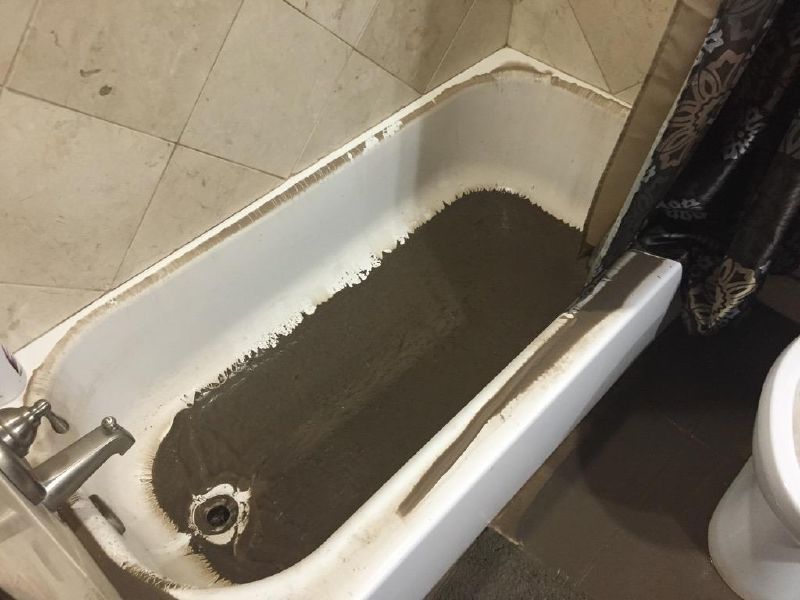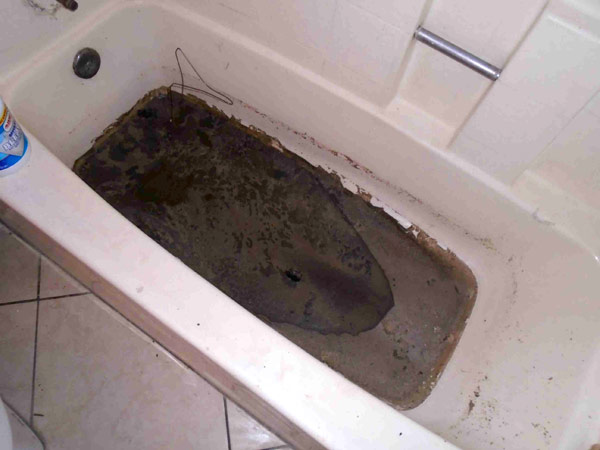Leading Reasons Behind Drainage Backflow in the Bathtub
Leading Reasons Behind Drainage Backflow in the Bathtub
Blog Article
The article directly below pertaining to Why is There Sewage Coming Up Through the Bathtub is absolutely intriguing. Read on and draw your own personal ideas.

Sewer back-up in the bathtub can be a distressing and unhygienic issue for any homeowner. Not just is it inconvenient, however it likewise poses major health and wellness risks and indicates underlying problems with the plumbing system. Understanding why sewer is turning up with the tub is vital for taking appropriate activity to address the issue properly.
Intro to the Concern
Typical Factors for Sewage Back-up
Obstructions in the Drain Line
Among one of the most typical sources of sewer backup is a clog in the drain line. This can take place as a result of the accumulation of particles, oil, or foreign things in the pipes, preventing correct flow and triggering sewer to back up right into your bath tub.
Tree Origin Intrusion
Tree roots seeking moisture and nutrients can penetrate sewer lines via little splits or joints. Over time, these roots can expand and increase, triggering significant damages to the pipes and leading to sewage backup problems.
Understanding the Trouble
When sewage draws back up right into the tub, it's a clear sign of a problem with the water drainage system. The wastewater that must be flowing away from your home is rather discovering its back right into your home, which can lead to substantial damage and health hazards.
Possible Causes
A number of factors can contribute to sewage back-up in the tub. From blockages in the sewer line to problems with the plumbing framework, recognizing the source is vital for finding an option.
Aging Framework
Older homes may have dated plumbing systems that are a lot more susceptible to corrosion, splits, and wear and tear. As pipes age, they come to be much more susceptible to leakages and obstructions, increasing the chance of sewer back-up incidents.
Heavy Rainfall or Flooding
During periods of heavy rainfall or flooding, the sewer system may become overwhelmed with excess water, triggering backups and overflows. This can result in sewage supporting into tubs and other fixtures inside the home.
Indications of Sewage Backup
Foul Odors
Undesirable smells emanating from drains or fixtures, particularly in the restroom, may show sewage back-up concerns. These odors are typically strong and consistent, indicating a trouble that calls for prompt interest.
Slow Draining Fixtures
Bath tubs, sinks, and commodes that drain slowly or otherwise whatsoever could be experiencing sewer backup. If numerous components are affected simultaneously, it's most likely that the problem originates from a common factor, such as the main sewage system line.
Gurgling Noises
Unusual gurgling or gurgling sounds originating from drains when water is running elsewhere in your home are a sign of air trapped in the plumbing system. This air build-up can arise from sewage backup and should be investigated quickly.
Health Threats Connected With Sewage Back-up
Contamination of Water System
Sewage back-up can contaminate the water supply in your home, posing a significant wellness threat to you and your family members. Exposure to contaminated water can bring about gastrointestinal issues, skin infections, and various other health problems.
Mold Growth
Wetness from sewer back-up can produce perfect problems for mold growth in your home. Mold and mildew spores can intensify respiratory problems and trigger allergic reactions in delicate people, making punctual cleaning vital.
Spread of Illness
Sewage consists of dangerous bacteria, viruses, and parasites that can cause a series of illness, consisting of hepatitis, cholera, and gastroenteritis. Coming into contact with sewer or infected surfaces places you at risk of infection.
Cleaning Up After Sewer Back-up
Sanitation Procedures
Thoroughly disinfect and disinfect affected areas after sewage backup to remove unsafe germs and avoid mold and mildew development. Use proper cleaning products and safety gear to guarantee risk-free and efficient cleanup.
Remediation of Affected Areas
Fix any damages to floor covering, walls, or components brought on by sewage backup. Depending upon the extent of the damages, you may require to change carpeting, drywall, or other products to restore your home to its pre-loss condition.
Immediate Actions to Take
Switching Off Water Supply
In the event of sewage back-up, it's important to turn off the water to stop additional contamination and damages. Locate the major water shutoff valve in your house and shut it off till the problem can be fixed.
Speaking To a Professional Plumber
Taking care of sewage back-up is not a do it yourself work. Get in touch with a qualified plumber with experience in handling sewage-related issues to examine the scenario and execute needed repair services or cleanups.
Preventing Contact with Contaminated Water
Till the sewage backup is dealt with, stay clear of contact with contaminated water to prevent the spread of germs and microorganisms. Use protective equipment if you need to remain in the afflicted area and wash your hands thoroughly afterward.
Safety nets
Normal Maintenance of Sewage System Lines
Schedule routine examinations and maintenance of your sewage system lines to identify and attend to potential problems prior to they escalate right into major issues. This can consist of cleaning particles, examining for tree root invasion, and repairing any type of broken pipelines.
Mounting Backwater Shutoffs
Think about setting up bayou valves in your plumbing system to avoid sewer from flowing back into your home during durations of heavy rainfall or flooding. These shutoffs automatically close when water draws back up, securing your residential or commercial property from contamination.
Appropriate Disposal of Household Waste
Stay clear of purging anything apart from toilet tissue and human waste down the commode to prevent obstructions and blockages in the sewer line. Dispose of oil, oil, and various other house chemicals correctly to minimize the threat of plumbing problems.
Why Is Water Backing Up in My Bathtub When I Flush My Toilet?
What to do about a sewer line clog
First, don’t bother with plunging. No amount of plunging will dislodge the clog in a sewer line. The clog is too far away. Plungers are for clogs in the toilet itself, not the sewer line. Plus, the most likely causes of a sewer clog are:
Tree roots Flushed toys or feminine products Grease buildup Those items don’t move easily. And in the case of tree roots, the roots need to be cut out of the pipe and the pipe will need to be repaired.
You’ll need a closet auger. A closet auger is a type of plumber’s snake with a protective cover to keep from scratching the delicate porcelain toilet. If the clog is further down, you may need to remove the toilet or use one of your cleanouts to get to the clog.
We also recommend doing a video inspection of the drain to ensure that the cause of the clog has been completely removed. Otherwise, you could have the same problem again in a few days or weeks.
https://mspplumbingheatingair.com/blog/why-is-water-backing-up-in-my-bathtub-when-i-flush-my-toilet

Do you like reading about Water Coming up Bathtub Drain? Post a comment further down. We'd be pleased to see your reactions about this write up. In hopes that you visit us again later on. Sharing is good. Helping people is fun. I appreciate reading our article about Water Coming up Bathtub Drain.
Contact Us Today
Report this page